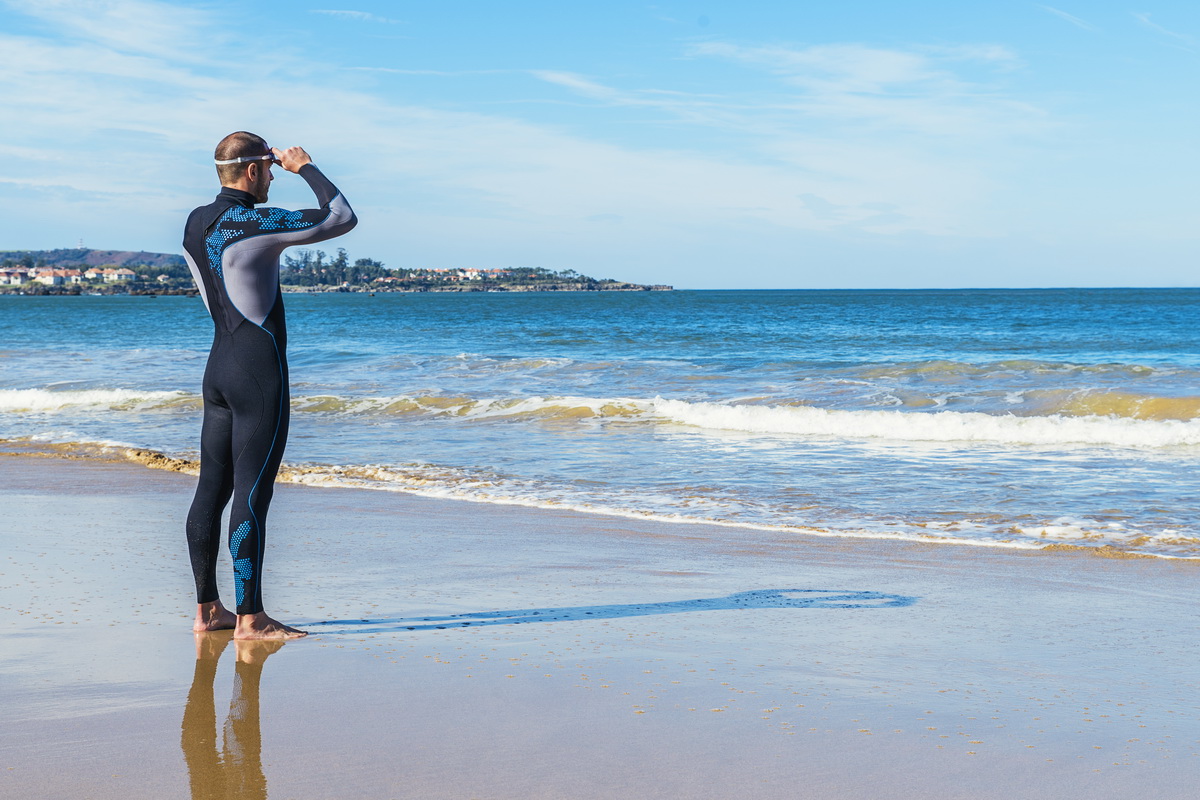Open water swimming is a great way to enjoy nature and the outdoors, all whilst exerting yourself physically. Yet, as thrilling as it may be, it is also very much challenging. Not only will you be faced with the same technical challenges that you encounter in the pool, you will also have to navigate unpredictable currents and waves, but also the changing weather conditions and colder temperatures. Luckily, it is all worth it in the end as these are also what make open water swimming such a unique and highly rewarding sport when practiced safely and confidently.
Here are a few tips on how to prepare for your first open water swim, from training and practicing your technique in the pool, to gearing up for your first outdoor swim.
Out of the pool and into the open water
Most swimmers will be used to swimming pool lanes neatly aligned over clear and steady water. So, whilst you may be breaking PRs in the swimming pool, you cannot expect yourself to be matching them once you dive into the murky and inconsistent open waters. Although the strength of your swimming will naturally play an equally important role in determining your performance whether you are in or out of the pool, the principal skill that open water swimmers have to both learn and practice is adaptability.
When a wave comes at you from your left or a current suddenly draws you to the right, you need to be able to adjust your swimming stroke time and time again to accommodate for the varying conditions. Finally, you will have to remember that you won’t be able to reach out for the side of the pool whenever you feel like taking a break.
Luckily, being aware of these challenges gives you the chance to prepare ahead of time and train yourself in ways which can help you manage them better.
Training for your first open water swim
Even though you can find ways to perfect any swimming stroke in the open water, beginners are encouraged to start out with their most comfortable stroke. Breaststroke and front crawl tend to be the most popular and efficient choices as these allow you to face forward and save more energy.
These two points are particularly crucial when trying to swim in a straight line and for longer periods of time. Open water swimmers estimate that you can consume almost twice the energy you would swimming in the pool as you are constantly required to change your rhythm and stroke. When it comes to swimming in a straight line, the key thing to remember is this: wherever your head points, your body will follow. Keeping your head fixed towards your goal will help maintain your body’s alignment and direction.
Less consistent
You can practice your front crawl in the pool by varying your breathing side. You may try to do one lap on one side and another on another, until you are comfortable with switching sides. Similarly, you will often have been encouraged to match your stroke pace to your breathing when you are learning how to swim; as your breathing rhythm is likely to be less consistent in the open water, you will need to practice in the pool until you feel sufficiently confident in your stroke. You can do this by first identifying a comfortable pace which matches your stroke with your breath and then trying to keep up the same pace but this time holding your breath over a varying number of strokes.
If you are still unsure about a particular technique or need some help to guide you through your preparation, private swimming lessons are a great option to help you prepare for your first open water swim. Before you set off to the sea, take the time to practice at your nearby swimming pool by getting in touch with a private swimming instructor. Going Swimmingly London offers a range of private swimming classes for children and adults of all levels of experience. Whether you are looking for more regular and intensive training or just hoping to brush up on a few skills, you can get in contact today to schedule a lesson during your next availability.
Equip yourself for open water swimming
If you are planning to go swimming somewhere in the UK, chances are that you will need a wetsuit. Even if you do chance upon some warm waters, wetsuits can still help you be more buoyant in the water and keep you covered from algae or other water borne substances. You should make sure that your wetsuit fits well: you should have enough space to move comfortably but not too much to trap large bubbles of air.
Although you won’t have the time or visibility to be gazing at the seabed or lake floor, goggles are key to open water swimming. Depending on the weather, you might opt for a pair of tinted goggles when its sunny or clear ones for cloudy days. It is also recommended for beginners to start in warmer waters to avoid complications due to the cold. Once you do feel ready to start swimming in colder waters, make sure to pack a hat and some water shoes to help keep you warm.
Getting out into the open
Ultimately, there is only so much preparation you can do in the pool before you take your first jump into the open water. The most important thing to remember is to start slow. Set yourself small, achievable goals and build up the distance or time from there. Take the time to adjust to these new surroundings and find targets which best suit your ability. You should also try to have someone accompany you to keep an eye on you and make sure everything goes well, even if it is from the shore. Remember, the more comfortable you feel, the more you will be able to enjoy the thrill of swimming out in the open!

